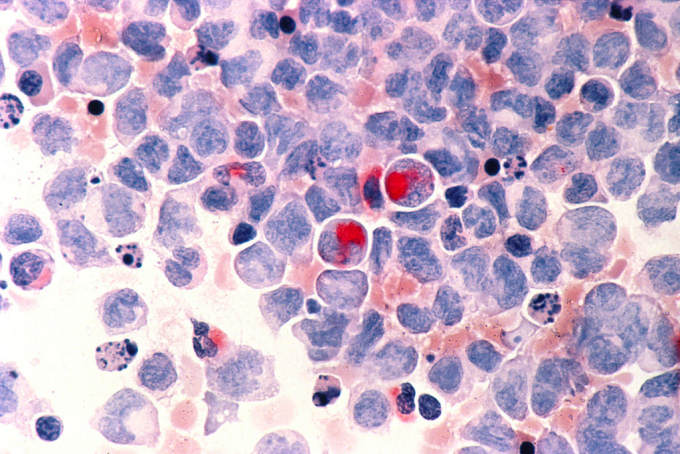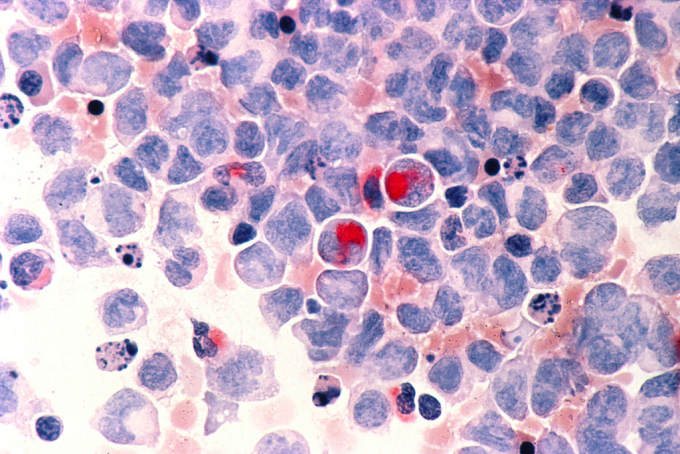
SEATTLE – Sept. 7, 2016 – Umbilical cord blood transplants may have advantages beyond offering an alternative stem cell source for leukemia patients without a traditional donor match, according to a study published today in The New England Journal of Medicine. The study, led by researchers at Fred Hutchinson Cancer Research Center, found that in patients at high risk of relapse after transplant, cord blood transplant recipients seem to have better outcomes against leukemia and the related bone marrow disorder, myelodysplastic syndrome.
These patients, who make up about a third of those facing a stem cell transplant, have what is known as “minimal residual disease,” in which the chemotherapy required before transplant isn’t completely successful at putting their cancer into remission, and small amounts of cancer cells remain. Only about a third of patients with detectable cancer in their blood at the time of transplant will still be alive three years later, as compared to nearly three-quarters of those without such residual disease.
“Patients going into transplant with minimal residual disease, they have very dismal outcomes,” said Fred Hutch transplantation researcher Dr. Filippo Milano, lead author of the NEJM paper. But this study showed that those who received a cord blood transplant “had good outcomes with low relapse rate” compared to patients who received stem cells from an adult, unrelated donor, Milano said.
Patients with detectable amounts of cancer cells in their blood could benefit from choosing cord blood as the source of stem cells for their transplant over a traditional transplant, Milano said. For the other two-thirds of the patients, those with no minimal residual disease, cord blood transplants and traditional transplants had very similar outcomes.
The study describes results from patients who have received stem cell transplants from cord blood or from unrelated adult donors. The researchers reviewed outcomes for 582 patients who received stem cell transplants from 2006, when the institute’s Cord Blood Program launched, to 2014. Of those,140 patients received cord blood transplants.
Cord blood transplantation offers one known, big advantage over adult donor transplants for the general population, said Dr. Colleen Delaney, who started Fred Hutch’s Cord Blood Program in 2006 and is an author on the study: “Everyone has a cord blood donor.”
Because stem cells in the umbilical cord are less developed than adult stem cells, they don’t have to be “matched” as stringently to a patient’s human leukocyte antigen, or HLA, type. HLA genes are part of each person’s unique genetic background that determines the likelihood of rejecting donor stem cells. Doctors typically look for a 10-out of-10 match of HLA genes between patients and their donors, but, if such a perfect match doesn’t exist among relatives or unrelated donors, they’ll often go with an eight- or nine-out-of-10 match. Transplants from such “mismatched” donors may be better than no transplant at all, but as studies like Milano and Delaney’s show, cord blood transplants may be the best option for some patients.
“This brings home the point that cord blood shouldn’t be called an alternative donor. The outcomes are the same as a conventional donor,” Delaney said. “This paper shows that if you’ve got high-risk disease and are at high risk for relapse post-transplant, transplant with a cord blood donor may be the best option.”
###
ABOUT FRED HUTCH
At Fred Hutchinson Cancer Research Center, home to three Nobel laureates, interdisciplinary teams of world-renowned scientists seek new and innovative ways to prevent, diagnose and treat cancer, HIV/AIDS and other life-threatening diseases. Fred Hutch’s pioneering work in bone marrow transplantation led to the development of immunotherapy, which harnesses the power of the immune system to treat cancer with minimal side effects. An independent, nonprofit research institute based in Seattle, Fred Hutch houses the nation’s first and largest cancer prevention research program, as well as the clinical coordinating center of the Women’s Health Initiative and the international headquarters of the HIV Vaccine Trials Network. Private contributions are essential for enabling Fred Hutch scientists to explore novel research opportunities that lead to important medical breakthroughs. For more information visit fredhutch.org or follow Fred Hutch on Facebook, Twitter or YouTube.
Contact:
Sandy Van
Fred Hutchinson Cancer Research Center
O: 808.526.1708
M: 808-206-4576
[email protected]
[email protected]
Media Contact
Sandy Van
[email protected]
808-526-1708
@FredHutch
http://www.fhcrc.org
The post Cord blood transplant associated with high survival rate in high-risk leukemia patients appeared first on Scienmag.





